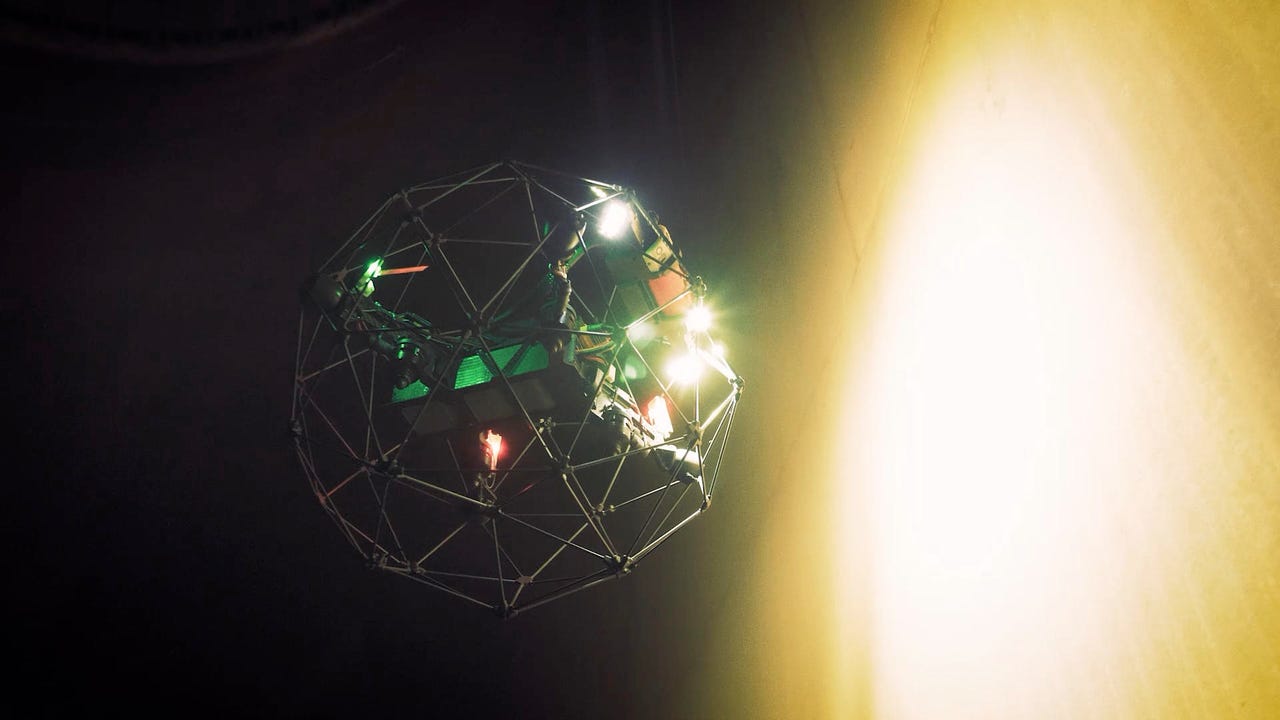A drone designed to fly in dark, confined spaces


Open the user manual of just about any drone, whether commercial or consumer, and it will tell you near the front, often in large font, not to use your quadcopter indoors or in confined spaces. It's such a hard-and-fast rule that watching one flying indoors feels genuinely disconcerting.
But as the drone market becomes increasingly saturated, a number of companies are targeting that precious untapped air space. Pensa makes drones to scan store shelves and track inventory, for example. Verity Studios, founded by Kiva co-founder Raffaello D'Andrea, makes drones with failsafe algorithms to keep them stable in the event a propeller fails. That measure of safety has allowed Verity to put on extravagant indoor stage shows using drones as performers.
Enter Flyability, which makes drones for indoor inspection and exploration. This week, the company, a spinoff from EPFL, a Swiss university known internationally as a robotics powerhouse, is debuting Elios 2, a confined space investigation UAV.
In many ways, building commercial drones for indoor use is a smart hedge. Line of sight regulations and rules governing flying over populated areas have put natural throttles on the growth of the commercial drone sector. But indoor applications in personnel controlled areas encounter fewer roadblocks. Of course, you still have to build a drone that won't crash after bumping a wall.
Must-see offers
"[Crash tolerance] is the true enabler to gathering data in the intricate and hostile places where our customers are searching for insights," says Patrick Thévoz, CEO of Flyability.
The company's first production drone relied on a passive cage to protect the sensitive propellers from catastrophic collisions. Elios 2 rethinks the passive mechanical protection design by with added intelligence in the flight controller and motors, all of which is accompanied by 7 vision stability sensors for GPS-free stabilization, a must when working indoors.
"To date, more than 550 Elios drones have been deployed at over 350 sites to inspect critical infrastructure for industries as diverse as power generation, mining, oil and gas, and chemical, even operating in radioactive areas of nuclear plants," Thévoz says.
We're almost certainly looking at a future when drones dominate our skies. It's looking more and more that we might be running into drones behind closed doors, as well.